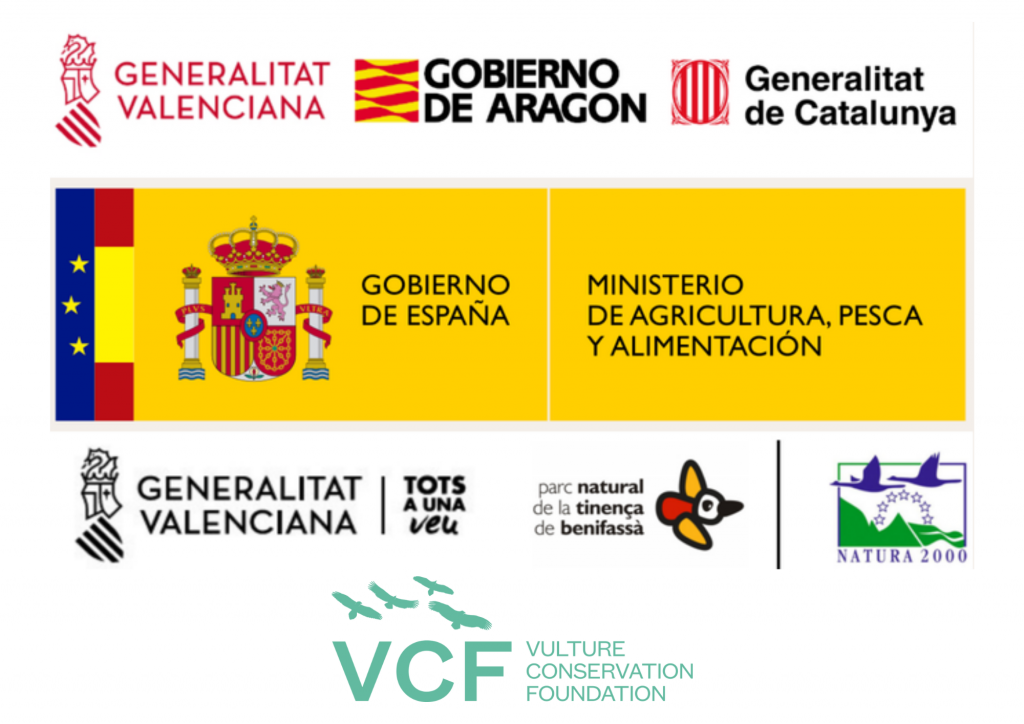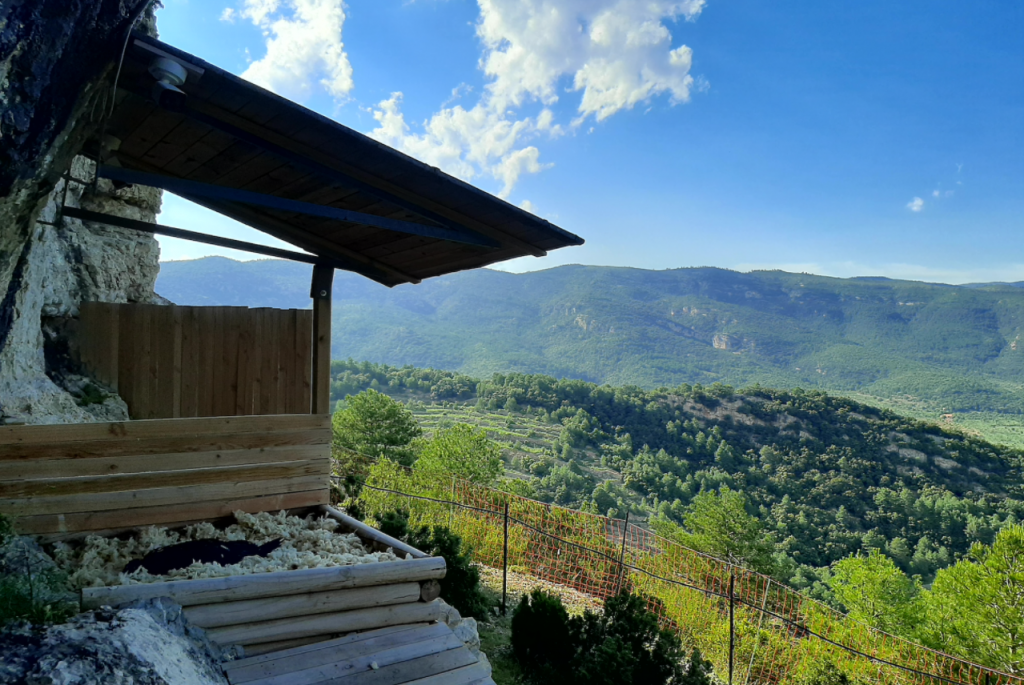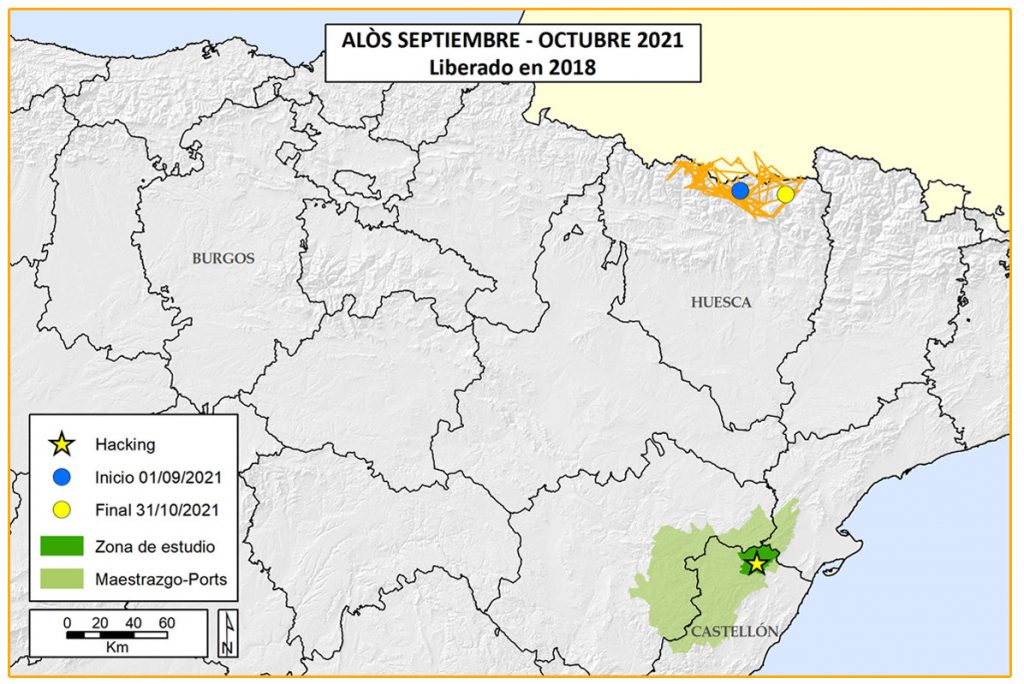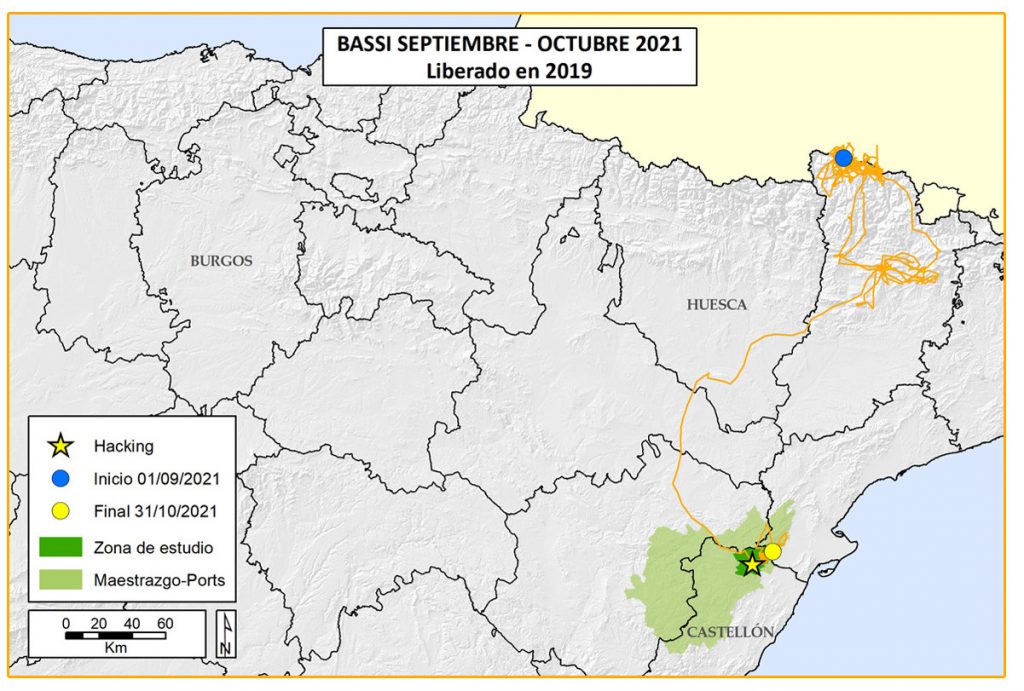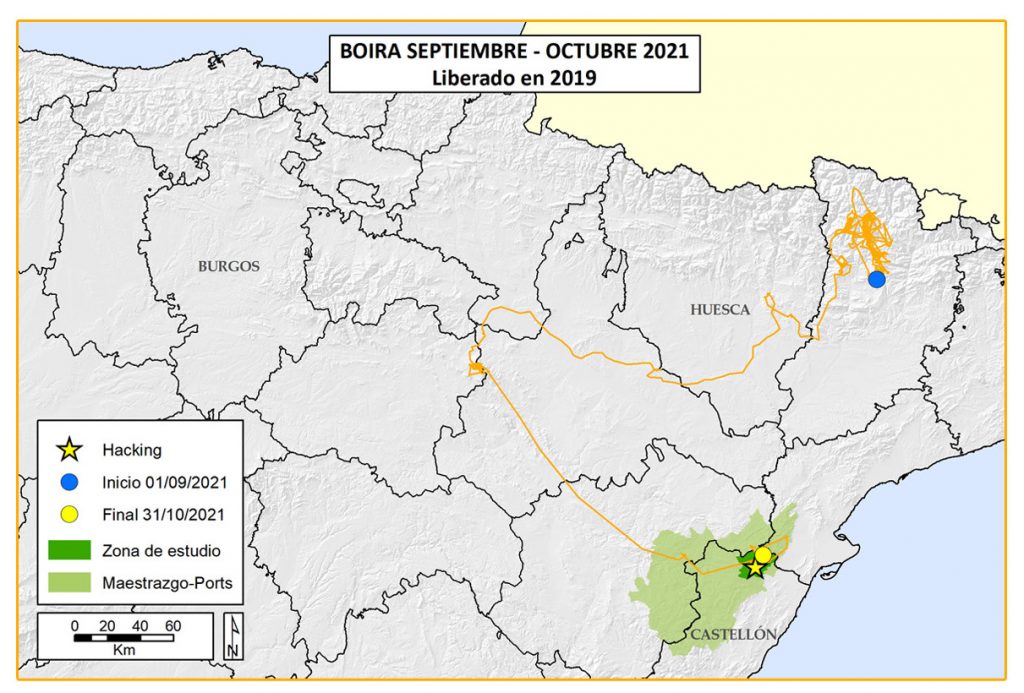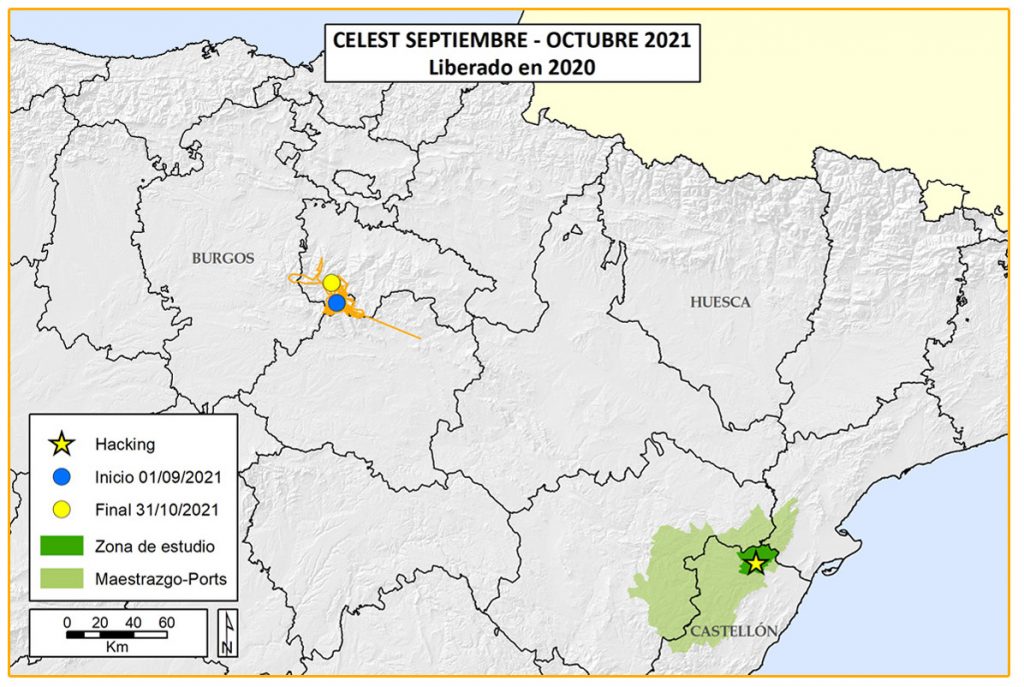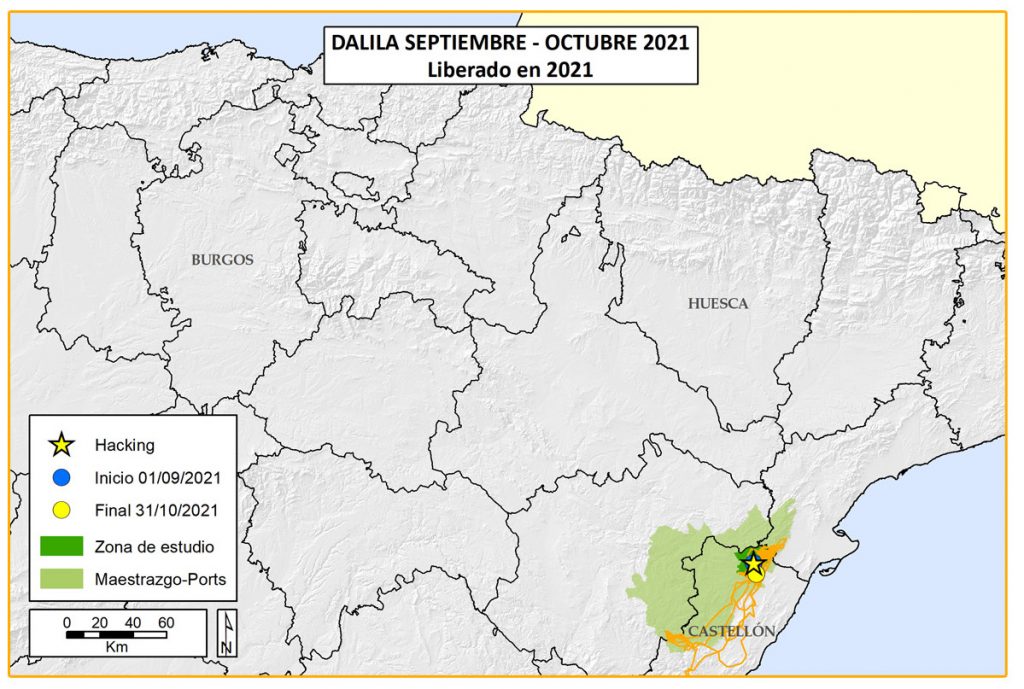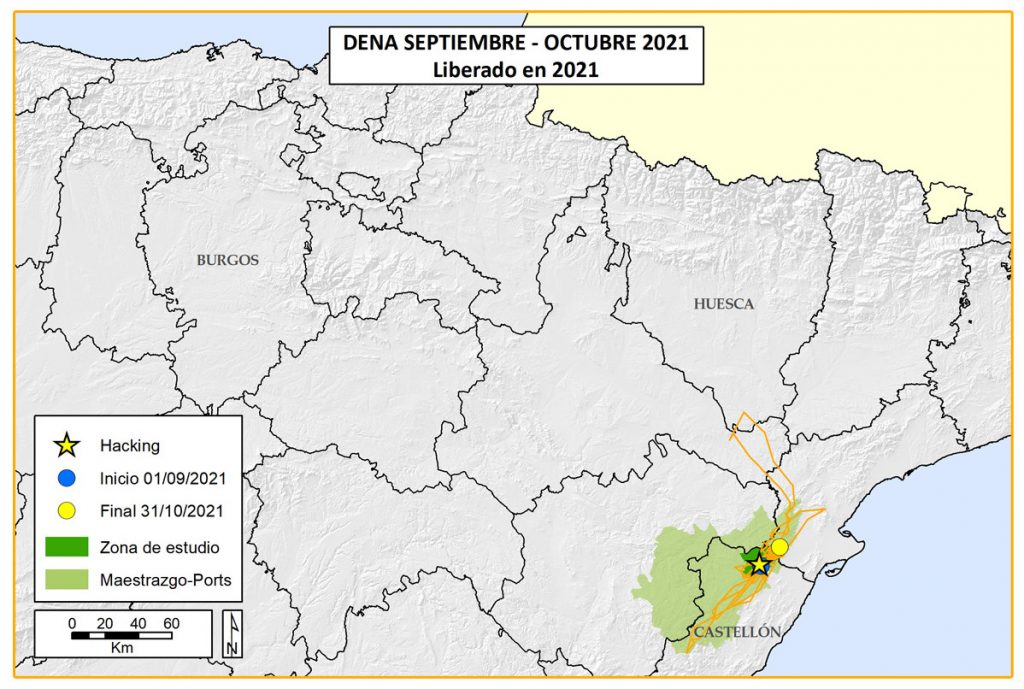
Since 2018, we have been releasing young captive-bred Bearded Vulture individuals into Maestrazgo to reintroduce the species in the region. We have been tracking the GPS movements of the released birds, and it seems they are adapting well and exploring the surrounding area.
Breeding and releasing Bearded Vultures in Maestrazgo
The Bearded Vulture Captive Breeding Network, coordinated by us at the Vulture Conservation Foundation (VCF) on behalf of EAZA‘s EEP, breeds the species in captivity to support conservation actions, like our newest Bearded Vulture reintroduction project in Maestrazgo. We release birds using the hacking method, which imitates more or less the natural way of fledging. This method entails releasing 3-month-old captive-bred Bearded Vultures at an artificial nest located in suitable habitat to acclimatise to the natural environment for a few weeks before they are ready to take their first flights. With this technique, the nestlings can associate the place where they are released with the area of hatching so that when they reach breeding age, which is around 8-10 years old, they select these places to breed. When Bearded Vultures are young, they tend to travel vast distances and explore new regions, but once they become sexually mature, they tend to select areas close to where they hatched to breed.
Movements of captive-bred release Bearded Vultures
The project that launched in 2018 has so far released nine young captive-bred Bearded Vultures into the region. Two of these have sadly died – a fledgling released in 2020 from an attack by another bird, probably a Golden eagle, and a one-month-old fledgling from 2021 died from unknown causes that are still being investigated.
The remaining seven Bearded Vultures released are doing well. One bird from 2018 (Amic) and two from 2019 (Bassi and Boira) have returned to Maestrazgo after they performed dispersal movements exploring nearby regions, a typical behaviour for young Bearded Vultures. Furthermore, the two birds released this year have also started to explore the surroundings. The regions they visited include the surrounding mountain ranges up to the Pyrenees and Picos de Europa, via the Iberian System mountains. The maps below show their latest movements.

Connecting populations of Bearded Vultures in Spain
The Maestrazgo region of Spain was historically a breeding site for Bearded Vultures and while there is no resident population the area is regularly visited by individuals released in Andalusia. The project to reintroduce the species to the region began in 2018 with the aim of establishing a wild breeding population that will bridge the populations in the Pyrenees and Andalusia, similar to the LIFE GYPCONNECT project in France that connects populations in the Pyrenees and the Alps. Over the course of the project, Bearded Vultures will be released in the Parque Natural de la Tinença de Benifassà. As part of the project, the released birds will be monitored by fitting them with GPS transmitters to better understand how they move around the region and to encourage movements of birds to the region a series of supplementary feeding stations will be created.
Generalitat of Valencia leads the project in collaboration with the Autonomous Communities from Aragón and Catalonia, the Spanish Ministry of Agriculture, Fish, Food and Environment and us here at the Vulture Conservation Foundation (VCF).
